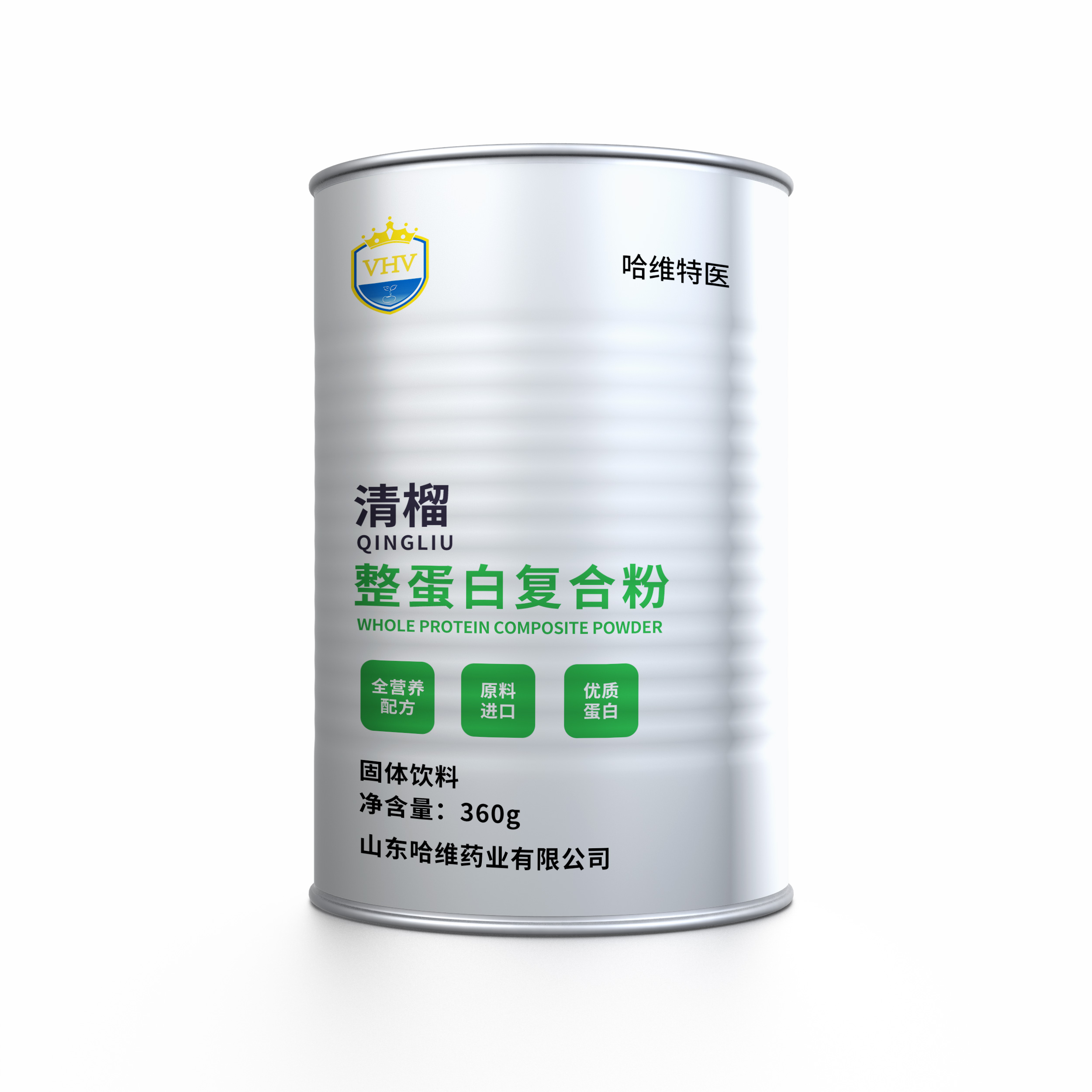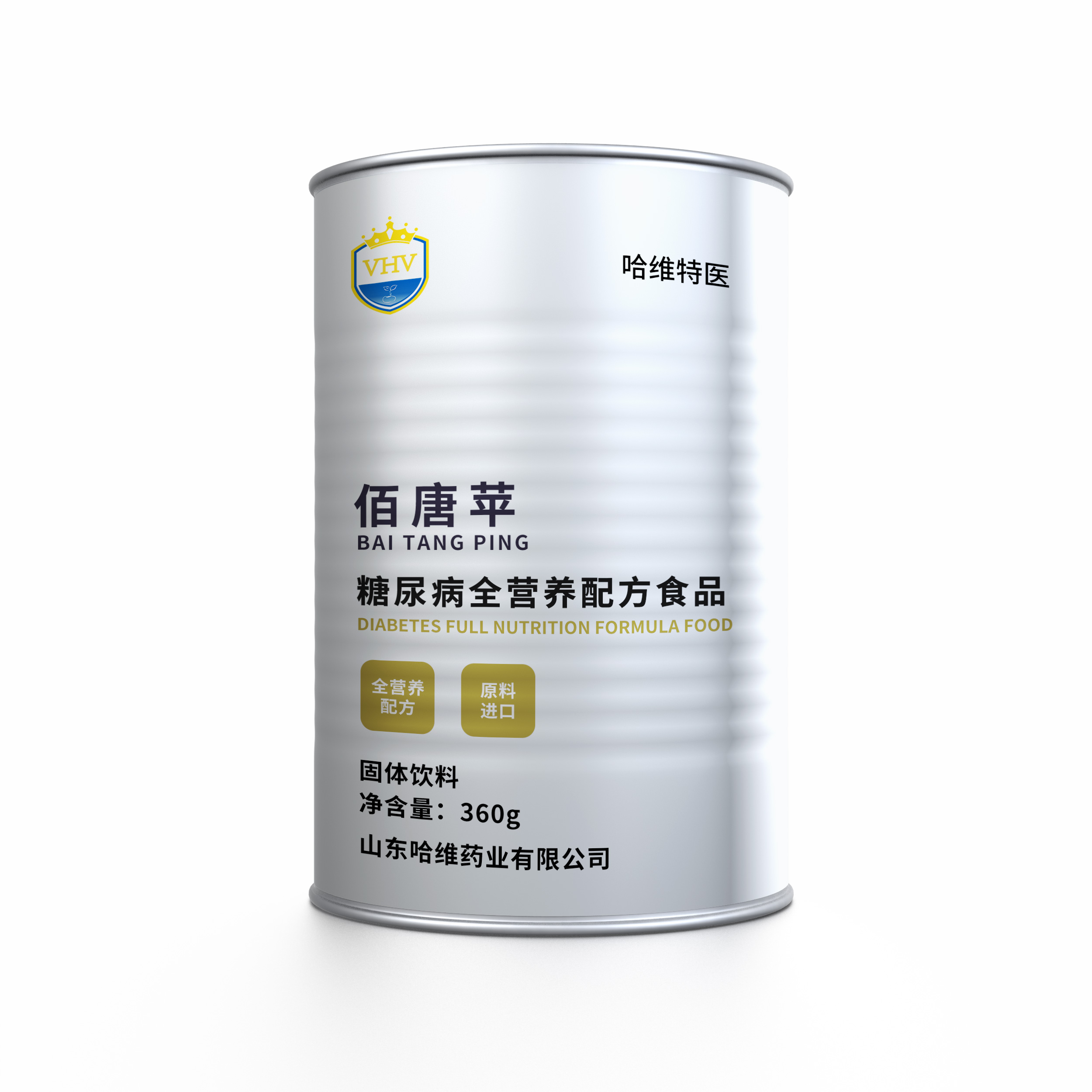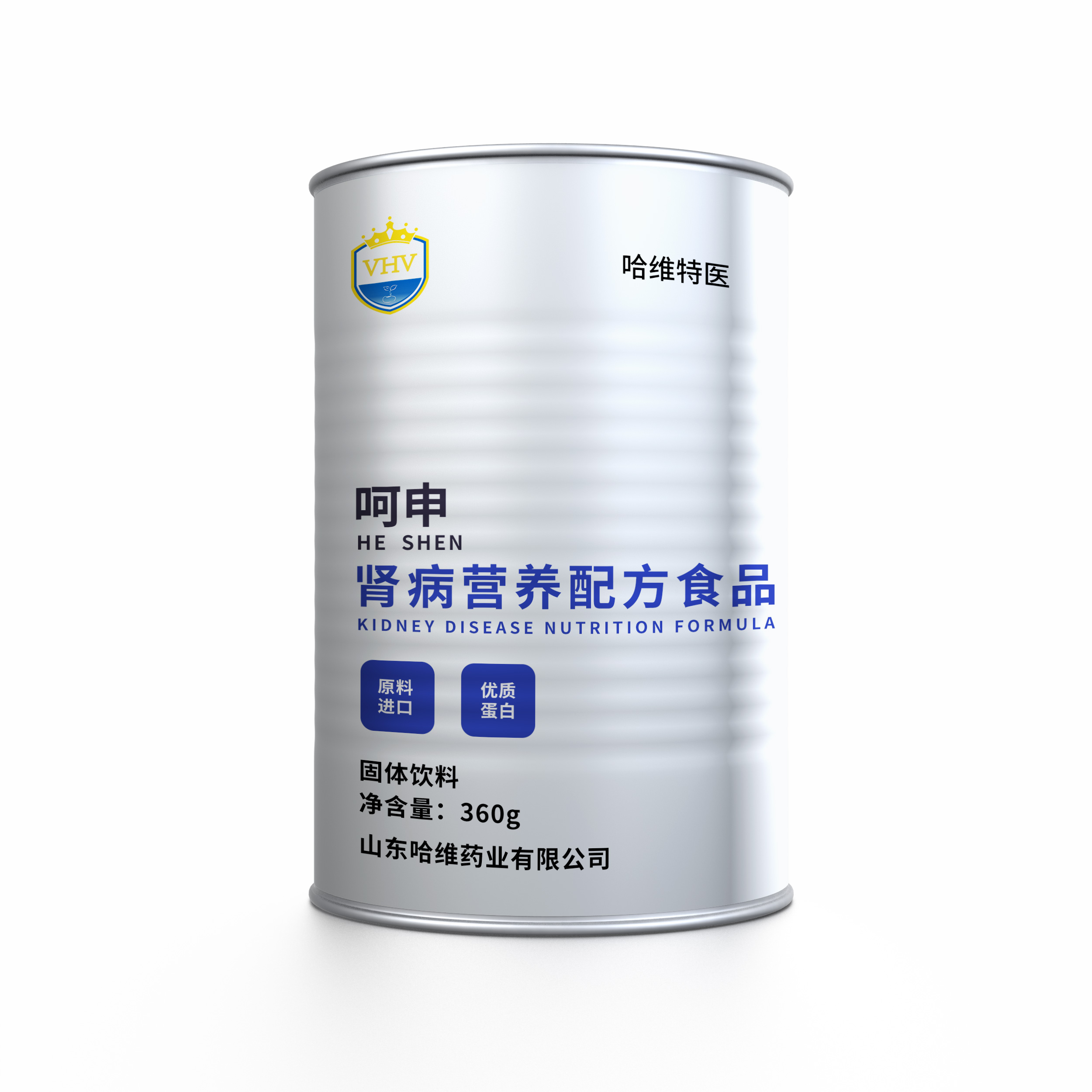Nutritional and health care effects of lactation nutrients (aifeifang 4) on women and infants
He Yujie 1, Yang ailing 2
(1. The First Affiliated Hospital of Shanxi Medical University; 2. Weifang Medical College)
Abstract: puerperal women are relatively weak, with poor appetite and poor digestion and absorption ability. They need to supplement the energy and physical strength consumed due to childbirth, as well as the nutrition and heat overdrawn due to breastfeeding. The simple daily diet can not meet the dual nutritional needs of mothers and infants. The fourth section of "love pregnancy workshop" can supplement the multi vitamins (especially VB, VK1) and minerals needed by the puerperal mothers, which is helpful to prevent the puerperal syndrome and improve the neonatal development index. It is an ideal nutrition and health food for mothers and infants in the puerperal period.
Key words: lactation nutrition; nutrition and health care; love pregnancy workshop 4
Physiological characteristics and nutritional needs of lactating women
The puerperal period, commonly known as "sitting on the moon", refers to the period of time from the delivery of placenta to the recovery of all organs of the maternal body except the mammary gland or close to the normal state of non pregnancy, generally 6 weeks [1]. The physiology and psychology of puerperal women will change greatly. At this time, the parturient should give priority to rest, especially in bed rest within 15 days after childbirth, so as to take good care of the body and promote the recovery of all systems of the whole body organs, especially the reproductive organs as soon as possible. Puerperal women are weak, have poor appetite and poor digestion and absorption ability. They should not only supplement the energy and physical strength consumed due to childbirth, but also supplement the nutrition and heat overdrawn due to breastfeeding [1]. Therefore, the simple diet can not meet the dual nutritional needs of mothers and infants, so it is necessary to supplement nutrition and health food.
2. Introduction to 4 sections of aiyunfang
2.1 raw materials
Calcium carbonate, ferrous fumarate, zinc gluconate, copper gluconate, retinyl acetate, thiamine hydrochloride, riboflavin, pyridoxine hydrochloride, niacin, folic acid, L-ascorbic acid, VK1, d-Calcium pantothenate, d-alpha-tocopherol
2.2 suitable population
Mothers who need multi vitamins and minerals
The effect of the four components of "love pregnancy workshop" on puerperal women and infants
Daily calcium intake of lactating women should be 1300-1500mg [2]; lack of milk calcium will lead to infant rickets. In addition, pregnancy and lactation will affect the bone calcium metabolism of women, resulting in the decrease of bone mineral density. It is not enough to supplement calcium by food alone [3], only about 600 mg can be supplied in the diet, so additional supplement is needed. Puerperal anemia can affect the uterine involution, lead to late postpartum hemorrhage, increase the risk of puerperal infection, and may aggravate postpartum fatigue and postpartum depression. Therefore, active correction of puerperal anemia can significantly improve postpartum fatigue and other discomfort, reduce postpartum hemorrhage, and improve postpartum quality of life [4]. The lack of milk secretion in puerperal anemia decreased the exclusive breastfeeding of infants, which affected the healthy growth of infants [5]. If the iron storage has been exhausted and it is difficult to replenish enough iron only through food, it is necessary to replenish iron agent [6]. Zinc supplementation for pregnant women and lactating women has a positive impact on the level of zinc in milk [7], zinc supplementation can improve the level of serum zinc and the content of zinc in breast milk of pregnant women, lactating women and infants, and is conducive to the growth and development of newborns and infants [8]. The intake of some nutrients of lactating women in China is insufficient, and the intake of energy, VA, thiamine, riboflavin, calcium, zinc and magnesium are respectively recommended [9]. Russelfen et al. [10] found that copper deficiency in female rats definitely affected the growth and development of their offspring, especially led to brain lesions and neurodevelopmental disorders, which were irreversible. Copper deficiency in pregnant women can lead to copper deficiency in fetus, which is easy to cause intrauterine growth retardation [11]. It is suggested that the importance of nutrition for human pregnant and lactating mothers and its influence on the growth and development of children.
The lack of VA and IgA in maternal serum is one of the causes of neonatal diarrhea. Improving maternal VA level and enhancing maternal immunity can prevent and treat neonatal diarrhea [12]. The lack of VA in pregnancy and puerperium is related to postpartum depression [13]. The unreasonable diet structure of nursing mother or children will lead to the deficiency of VB1. VB1 treatment can rapidly relieve the symptoms of digestive, nervous or cardiovascular system in children [14]. Maternal long-term lack of VB2, skin and mucosa will appear nutritional disorders, VB2 has the role of prevention and treatment of chapped nipple [15]. VB6 can treat acute mastitis, gestational diabetes, mental depression caused by estrogen contraceptives, primary dysmenorrhea, mastitis and milk return [16]. When nicotinic acid is deficient, pellagra disease may occur, such as dermatitis, glossitis, oropharynx, diarrhea, restlessness, insomnia, and sensory abnormality. The VB2 and nicotinic acid deficiency rate of rural mothers and infants in China is significantly higher than that in cities [17]. The study found that lactating women without folic acid supplementation may have poor erythropoiesis. In order to prevent folic acid depletion of lactating mothers, it is necessary to ensure adequate nutrition of lactating mothers every day [18]. There was no adverse reaction in the treatment of infantile diarrhea with folic acid [19]. Lack of VC in breast milk or artificial feeding may lead to infant scurvy [20]. We should advocate breast-feeding, and pay attention to the diet of pregnant women and their mothers to provide enough VC. The artificial feeding should supplement VC from the third week after birth to prevent VC deficiency in infants [21]. Ve can shorten the breast milk time of parturient and accelerate the weight recovery of newborn [22]. Oral administration of VK1 before delivery is an effective method to prevent neonatal vitamin K deficiency hemorrhagic disease [23]. Newborns and infants without VK1 are at risk of serious bleeding, so appropriate supplementation of VK1 can prevent the occurrence of VK1 deficient bleeding [24]. Pantothenic acid can help cell formation, maintain normal development and development of central nervous system; it has the function of making antibodies, helping to resist infectious diseases, and helping to alleviate allergic symptoms [25].
The fourth section of aipregangfang supplements the vitamins and minerals needed by the puerperal nursing mother, which helps to prevent the puerperal anemia, puerperal infection, depression and insomnia, reduce the postpartum hemorrhage, and improve the quality of postpartum life; at the same time, it supplements the nutrition needed by the infants, prevents the diarrhea of the newborn, prevents the scurvy of the infant, prevents the occurrence of VK1 deficiency hemorrhage, and maintains the nerves and cardiovascular system of the newborn Systematic development is an ideal nutrition and health food for women and infants in puerperium.
Reference:
[1] Sun Xiujuan, Wang Hong. On diet guidance and psychological intervention for puerperal women [J]. Chinese Journal of metallurgical industry medicine, 2017,34 (05): 611-612
[2] Guo Shuzhen et al. Determination and analysis of calcium and phosphorus in blood, urine and milk of 52 puerperal women [J]. Chinese Journal of osteoporosis, 1996 (01): 45-46
[3] Wang Sumei et al. Effect of calcium supplementation on bone calcium metabolism and bone mineral density in puerperal women [J]. Chinese Journal of Practical Gynecology and obstetrics, 2007 (11): 867-868
[4]Milman N.Postpartum anemia: definition, prevalence, cause, and consequences[J].Ann Hematol.2011. 90 (11):1247-1253.
[5] Fu Shunqin. Clinical analysis of 715 cases of puerperal anemia affecting mothers and infants [J]. Clinical medicine, 2002 (02): 62-63
[6] Chinese society of perinatal medicine. Guidelines for the diagnosis and treatment of iron deficiency and iron deficiency anemia in pregnancy [J]. Chinese Journal of perinatal medicine, 2014,17 (7): 451-454
[7] Shao Baoyun, Zou Honghai. The effect of zinc supplementation on milk zinc level in pregnant and lactating women [J]. Practical preventive medicine, 2000 (04): 300
[8] Shao Baoyun, Qiang Huiling, et al. The effect of zinc supplementation for pregnant and lactating women on the growth and development of infants [J]. Shandong Medical Journal, 1999 (22): 15-16
[9] Li Fang, Mo Jieling. Analysis of the influence of dietary guidance on the nutritional status of lactating women and the content of zinc, copper and magnesium in milk [J]. Chinese new clinical medicine, 2013,6 (06): 583-586
[10] Luo Sufen, Li Haiqi, Zheng Huilian. The effect of copper deficiency during pregnancy and lactation on the development of offspring [J]. China children's health care, 1993 (01): 22
[11] Cui Yunhe, Zhangjiafang. Effect of copper on pregnant women and fetus [J]. Journal of Jining Medical College, 1989,12 (4): 58-60
[12] Li Xia, Fu Yan, et al. Study on the relationship between maternal serum vitamin A, IgA and neonatal diarrhea [J]. Journal of Neonatology, 2000 (05): 201-202
[13] Liu Weimin. The relationship between vitamin A deficiency in pregnancy and puerperium and postpartum depression [J]. China maternal and child health care, 2018,33 (09): 1932-1934
[14] Yan Fenglin, Chen JianZheng. 48 cases of infantile Vitamin B-1 deficiency [J]. Journal of Xinxiang Medical College, 2002 (02): 130-131
[15] Р. л. ШУБ, Li Zhigang. Effect of vitamin B Ш 2 on prevention and treatment of chapped nipple [J]. Shanxi Medical Journal, 1963 (04): 91 + 36
[16] Lu Jizong. Vitamin B6, the first choice of antiemetic drugs for pregnant women [J]. Family medicine, 2012 (10): 16
[17] Liu Huihui, Han Xiuxia, Liu Ligang, et al. Comparative analysis of four B vitamins content and nutritional status of mother and infant in urban and rural milk [J]. Health research, 2014,43 (03): 409-414
[18] Li Chengjie. The role of folic acid supplementation in lactation [J]. Foreign medicine (hygiene Division), 2000 (01): 61-62
[19] Zhang Ling, Shi Zhongqing. Observation on the efficacy of folic acid in the treatment of 40 cases of infantile diarrhea [J]. Medical theory and practice, 2007 (04): 481
[20] Feng Yaosheng, Qi Junhui. Clinical analysis of 18 cases of infant scurvy [J]. China Rural Medicine, 1996 (08): 31-32
[21] Li Xiuzhen. 22 cases of vitamin C deficiency in infants caused by artificial feeding [J]. Chinese community physician, 1998 (05): 48
[22] Guo Zhenqing, Chen Xiujuan. Clinical observation of vitamin E promoting milk secretion [J]. Shandong medicine, 2004 (31): 15
[23] Liu Wenchen, Bai Wei, Li Haisu, et al. Clinical observation on prevention of neonatal hemorrhage by oral vitamin K for pregnant women [J]. Chinese Journal of Contemporary Pediatrics, 2004 (06): 523-524
[24] Li Maojun, et al. Prevention and management of vitamin K-deficient hemorrhage in newborns and infants - brief introduction to the opinion of European Association of Pediatric Gastroenterology, Hepatology and nutrition [J]. Clinical Journal of practical hospital, 2017,14 (01): 29-31
[25] Li Huixian. A case of niacin deficiency [a]. Special committee of Dermatology and venereal diseases, Chinese society of integrated traditional and Western medicine, 2003:2







